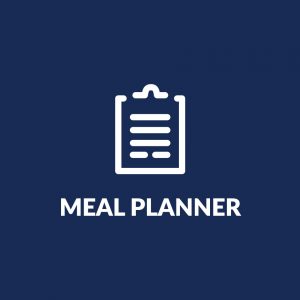Planning ahead can save you time and money at the grocery store.
Simple Tips Before you Shop
- Write some weekly meal plans with your schedule in mind. Choose some meals using recipes that are quick and easy to prepare for busy days. Click here for a sample meal planner.
- Review store ads and online and paper coupons to help plan your meals to save money.
- Use the What’s Cooking website to find healthy recipes.
- Know your food budget. Meal planning and cooking at home is less expensive than eating out. Meals prepared at home are often healthier, especially if you are preparing recipes low in fat and sodium. Track your food dollars to see how much you are spending and saving.
- Plan to use leftovers. Make double batches of soups and stews setting aside some to freeze for use later. Freeze leftovers in single portions to use for lunch or your own ready-to-eat freezer meals to use throughout the week.
- Pack your meals with fruits and vegetables. Plan ahead to make half of your plate fruits and vegetables.
- Add low-cost options to your meal plan such as brown rice, beans or lentils. These foods are full of nutrients and fiber, which will help to keep you full for a longer period of time.
- Use your meal plans to create your shopping list and stick to it. Remember to check the foods you may already have on hand. A list helps you organize the items you need to buy and helps you avoid impulse buys or unneeded items that can add to your food costs.
- Cook and freeze in large batches. This can help you save money by cooking more at home and having meals ready to heat from the freezer.
- Have a family? Get input from your kids on what they want to eat for the week. Working as a team to come up with meals will encourage them to think about healthy foods, and they will be more likely to eat what you cook that week.
At the Store
Once you have created meal plans and shopping lists, making healthy choices at the store should be easier. Focus on your list and do your best to stick to it. No time to prepare a shopping list? Try to come up with a few meal ideas in your head before entering the store to get an idea of all of the items you will need to purchase. As you become more familiar with your local grocery store, you will feel more comfortable and confident in your shopping routine.
- Eat a meal or snack before you go shopping. Going to the grocery store on an empty stomach can result in impulse shopping and more unhealthy food choices.
- Try to focus on shopping the perimeter of the store, where there are fewer processed, packaged foods.
- Buy fresh fruits and vegetables in season. Buying canned and frozen fruits and vegetables can save money, but watch for added fat, sugar or sodium.
- Some foods are good buys year round. Bananas, carrots, potatoes and apples are low-cost options. Use beans to save money on protein foods.
- Buy common products in bulk to save money (e.g. rice, beans, cooking oil and frozen vegetables). Be sure you have enough storage space and that you will be able to use the items before they expire.
- Convenience food items and single serving items generally cost more. Use your meal plan to prepare your meals at home. Make your own frozen meals and single size servings to save money.
- Have spare time on the weekend? Take your family out to a farmer’s market to purchase some fresh, local produce. Look online to find a market near you.





